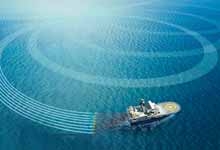- Home page /
- New technologies and equipment /
- Developments in seismic imaging
Developments in seismic imaging

To address this issue, the industry developed wide azimuth, rich azimuth, and multiazimuth acquisition configurations in which each section of the subsurface is illuminated from numerous angles.
These techniques create improved seismic images as the subsurface is imaged from multiple directions. To acquire data efficiently, two or more vessels are used. However, like traditional surveys, the vessels travel in straight lines and turn around between the end of one survey line and at the start of the next. While turning, no seismic data may be collected, resulting in significant nonproductive time.
The new method, developed by WesternGeco and enabled by navigational aids that the company also developed, is called the Coil Shooting full-azimuth acquisition technique. In this approach, seismic vessels sail in concentric, overlapping circles in the survey area while continuously gathering high-quality, multiazimuth seismic data.
In addition to eliminating NPT caused by turning, the new technique has been particularly successful for surveying complex subsalt formations. Case studies from Indonesia, Brazil, Angola, and the United States highlight the latest developments and successes of this highly accurate seismic system.
WesternGeco is the world’s leading geophysical services company, providing comprehensive worldwide reservoir imaging, monitoring, and development services.

